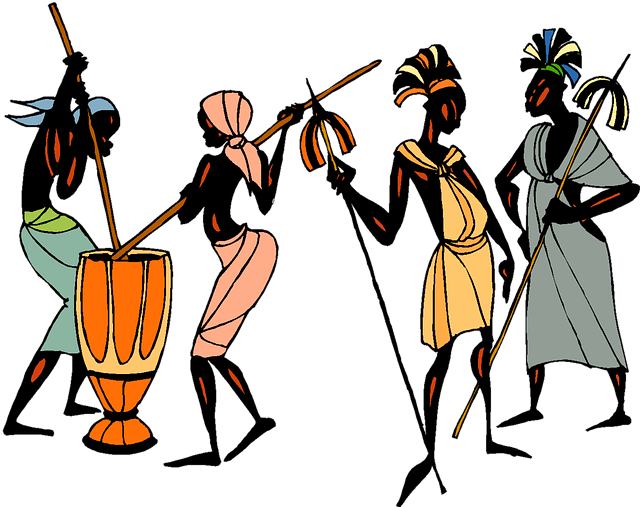The Constitution of India has recognized under ‘Schedule 5’ the Tribes of India. These are mostly indigenous people residing in India. The tribal community of India is known as the ‘Scheduled Tribes’. The community holds a large part of our country and is important. They represent our culture and tradition.
What is a tribe?
A tribe is a social division in a traditional society consisting of families linked by religious, social, blood ties, economical, with a common culture and dialect. They have distinctive features and qualities, with different characteristics that make them different and unique.
Important information on tribes of India
In India, tribes are known as ‘Adivasis’. We have approximately 500 – 645 tribes with many overlapping communities found in more than one state. But it is impossible to know about all of them. So, we have decided to name a few of them. They are an important part of our country, and we should respect them. Very few of us knew about them, and the rest of us fail to recognize them.
The Constitution of India has recognized them and gave them an important place in the country. Whether in the field of education, or sports, or music, they have the privilege. They have preservations in all the government intuitions. So, without any further delay, let’s know about some of the famous tribes of India.
Under Article 342 of the Indian constitution, defined that the scheduled, “such tribes or tribal communities or parts of or groups within such tribes or tribal communities as are deemed under Article 342 to be Scheduled Tribes for the purposes of this constitution”.
Statement accredited under Article 342 regarding Tribes of India.
1) The President may with respect to any State (or Union territory), and where it is a State, after consultation with the Governor thereof, by public notification, specify the tribes or tribal communities or parts of or groups within tribes or tribal communities which shall for the purposes of this Constitution be deemed to be Scheduled Tribes in relation to that State or Union territory, as the case may be.
(2) Parliament may by law include in or exclude from the list of Scheduled Tribes specified in a notification issued under clause
- Any tribe or tribal community or part of or group within any tribe or tribal community, but save as aforesaid a notification issued under the said clause shall not be varied by any subsequent notification.
Famous Tribes of India mentioned state-wise
Andhra Pradesh: Andh, Sadhu Andh, Bhagata, Bhil, Chenchus (Chenchawar), Gadabas, Gond, Goundu, Jatapus, Kammara, Kattunayakan, Kolawar, Kolam, Konda, Manna Dhora, Pardhan, Rona, Savaras, DabbaYerukula, Nakkala, Dhulia, Thoti, Sugalis, Banjara, Kondareddis, Koya, MukhaDhora, Valmiki , Yenadis, Sugalis, Lambadis.
Arunachal Pradesh: Apatanis, Abor, Dafla, Galong, Momba, Sherdukpen, Singpho, Nyishi, Mishmi, Idu, Taroan, Tagin, Adi, Monpa, Wancho
Assam:Chakma, Chutiya, Dimasa, Hajong, Garos, Khasis, Gangte, Karbi, Boro, Borokachari, Kachari, Sonwal, Miri, Rabha, Garo
Bihar: Asur, Baiga, Birhor, Birjia, Chero, Gond, Parhaiya, Santhals, Savar, Kharwar, Banjara, Oraon, Santal, Tharu
Chhattisgarh:Agariya, Bhaina, Bhattra, Biar, Khond, Mawasi, Nagasia, Gond, Binjhwar, Halba, Halbi, Kawar, Sawar,
Goa: Dhodia, Dubia, Naikda, Siddi,Varli, Gawda.
Gujarat: Barda, Bamcha, Bhil, Charan, Dhodia, Gamta, Paradhi, Patelia, Dhanka, Dubla, Talavia, Halpati, Kokna, Naikda, Patelia, Rathawa, Siddi.
Himachal Pradesh: Gaddis, Gujjars, Khas, Lamba, Lahaulas, Pangwala, Swangla, Beta, Beda Bhot, Bodh.
Jammu and Kashmir: Bakarwal, Balti, Beda, Gaddi, Garra, Mon, Purigpa, Sippi, Changpa, Gujjar.
Jharkhand: Birhors, Bhumij, Gonds, Kharia, Mundas, Santhals, Savar, Bedia, Ho, Kharwar, Lohra, Mahli, Parhaiya, Santal, Kol, Banjara.
Karnataka: Adiyan, Barda, Gond, Bhil, Iruliga, Koraga, Patelia, Yerava, Hasalaru, KoliDhor, Marati, Meda, Naikda, Soligaru.
Kerala: Adiyan, Arandan, Eravallan, Kurumbas, Malaiarayan, Moplahs, Uralis, Irular, Kanikaran, Kattunayakan, Kurichchan, Muthuvan.
Madhya Pradesh: Baigas, Bhils, Bharia, Birhors, Gonds, Katkari, kharia, Khond, Kol, Murias, Korku, Mawasi, Pardhan, Sahariya,
Maharashtra: Bhaina, Bhunjia, Dhodia, Katkari, Khond, Rathawa, Warlis, Dhanka, Halba, Kathodi, Kokna, KoliMahadev, Pardhi, Thakur,
Manipur: Naga, Kuki, Meitei, Aimol, Angami, Chiru, Maram, Monsang, Paite, Purum, Thadou, Anal, Mao, Tangkhul, Thadou, Poumai Naga.
Meghalaya: Chakma, Garos, Hajong, JaintiasKhasis, Lakher, Pawai, Raba, Mikir.
Mizoram: Chakma, Dimasa, Khasi, Kuki, Lakher, Pawi, Raba, Synteng, Lushai
Nagaland: Angami, Garo, Kachari, Kuki, Mikir, Nagas, Sema, Ao, Chakhesang, Konyak, Lotha, Phom, Rengma, Sangtam,
Odisha: Gadaba, Ghara, Kharia, Khond, Matya, Oraons, Rajuar, Santhals, Bathudi, Bathuri, Bhottada, Bhumij, Gond, Juang, Kisan, Kolha, Kora, Khayara, Koya, Munda, Paroja, Saora, Shabar, Lodha.
Rajasthan: Bhils, Damaria, Dhanka, Meenas(Minas), Patelia, Sahariya, Naikda, Nayaka, Kathodi.
Sikkim: Bhutia, Khas, Lepchas, Limboo, Tamang
Tamil Nadu: Adiyan, Aranadan, Eravallan, Irular, Kadar, Kanikar, Kotas, Todas, Kurumans, Malayali,
Telangana: Chenchus.
Tripura: Bhil, Bhutia, Chaimal, Chakma, Halam, Khasia, Lushai, Mizel, Namte, Mag, Munda, Riang.
Uttarakhand: Bhotias, Buksa, Jannsari, Khas, Raji, Tharu.
Uttar Pradesh: Bhotia, Buksa, Jaunsari, Kol, Raji, Tharu, Gond, Kharwar, Saharya ,Parahiya, Baiga, Agariya, Chero
West Bengal: Asur, Khond, Hajong, Ho, Parhaiya, Rabha, Santhals, Savar, Bhumij, Bhutia, ChikBaraik, Kisan, Kora, Lodha, Kheria, Khariam, Mahali, Mal Pahariya, Oraon,
Andaman and Nicobar: Oraons, Onges, Sentinelese, Shompens.
Tribes of our country should also get access and right like any other citizen of India has. Ministry of Tribal Affairs is responsible for the overall development of the scheduled tribes in India, and The Ministry of Tribal Affairs should implement the policies for the development of the tribes. I hope that it helped you to know about our tribes. To read more like this, visit our website.

